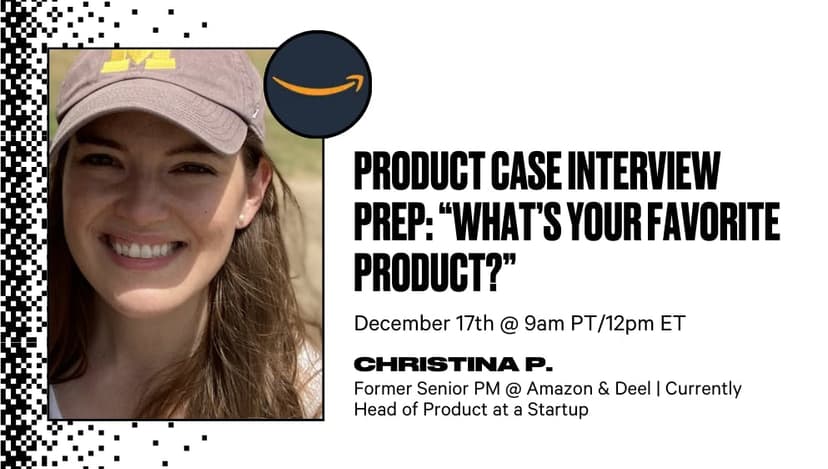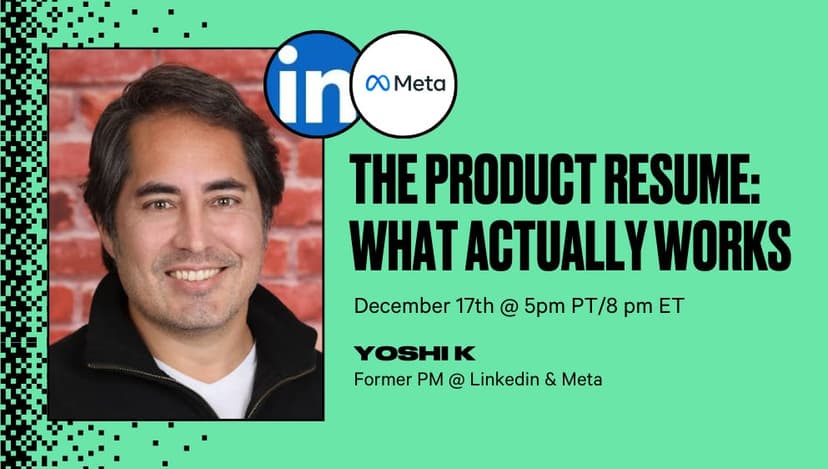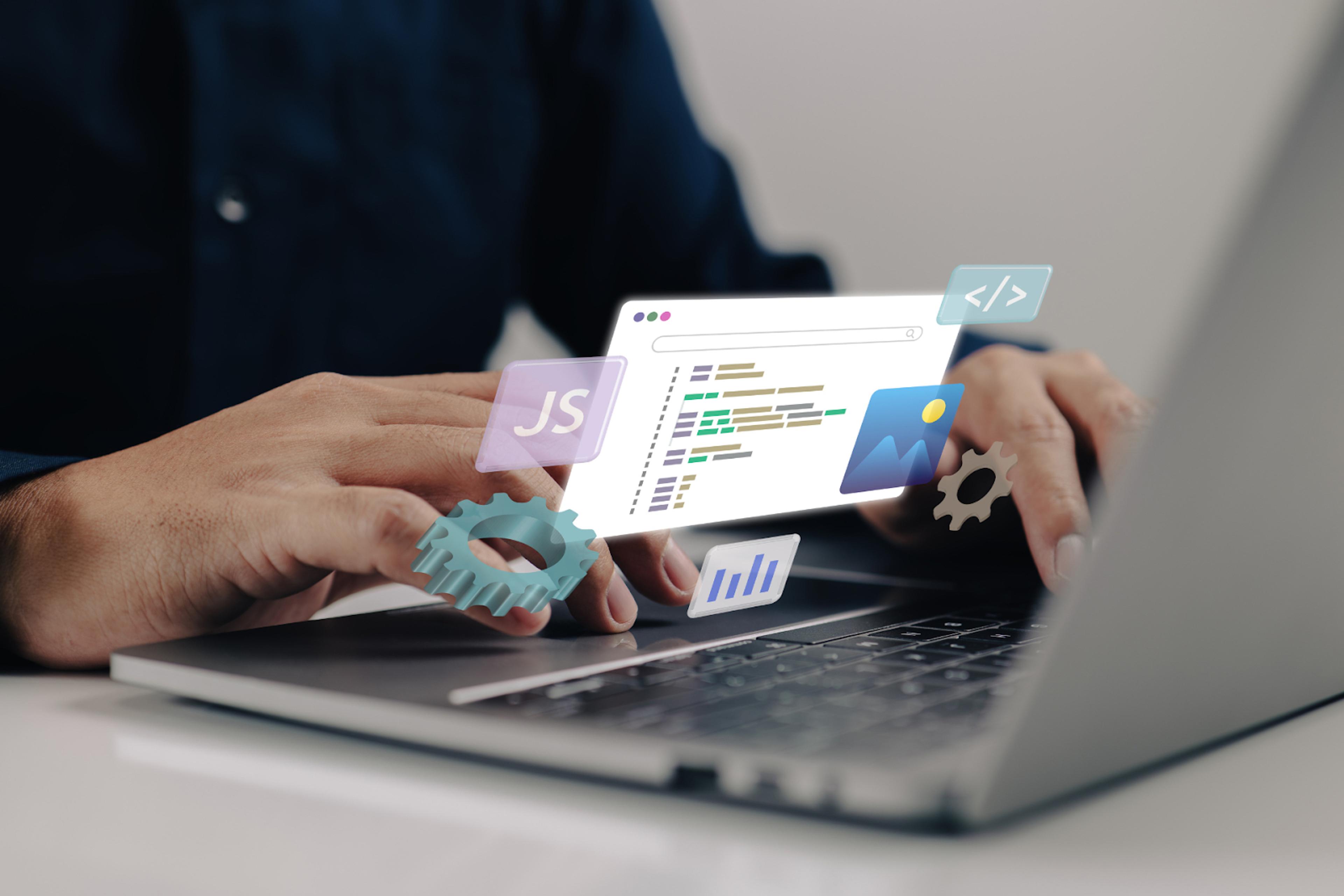Minimum Viable Product (MVP) - What It Is, Types, & Examples
A minimum viable product (MVP) is a version of a product that includes few features to attract early adopters and validate the core idea before a full-scale launch.
Posted June 23, 2025

Join a free event
Learn from top coaches and industry experts in live, interactive sessions you can join for free.
Table of Contents
Minimum Viable Product, or MVP, is a key strategy in the world of product development and startups. It's the bare-bones version of your product that packs just enough punch to grab early adopters' attention. Whether you're in software development or launching a new business, understanding MVPs can be a real game-changer for your success.
In this article, we'll break down what an MVP is and why it matters. You'll learn about the different types of MVPs and see some real-world examples that'll get your creative juices flowing. We'll also walk you through the steps to define your own MVP, so you can hit the ground running with your next big idea. Ready to dive in and see how MVPs can transform your approach to product management? Let's get started!
What is a Minimum Viable Product (MVP)?
A minimum viable product (MVP) is a version of a product with just enough features to be usable by early customers and provide feedback for future development. It's the bare-bones version of your product that still solves the problem for your customers. The key to building an MVP is to start learning with a product version that contains only the core and existing features, but still allows you to validate your hypothesis.
Think of it like this: if someone needed transportation between Point A and Point B, you wouldn't start by giving them a Tesla. You might begin with a skateboard or a scooter. Based on feedback, you'd move to a motorbike, then eventually to a car with a built-in radio. This approach helps you understand what works and what doesn't, avoiding the mistake of creating a skateboard with a Nintendo Wii strapped to the front.
How MVPs differ from prototypes
While both MVPs and prototypes are essential in product development, they serve different purposes. The main differences lie in their scope, commitment, and audience.
- Scope: Prototypes require less time and effort, allowing for quick changes and idea exploration. MVPs, on the other hand, involve more resources and people, as you've chosen an idea to pursue.
- Commitment: Due to the increased investment in an MVP, you're less likely to scrap it entirely. While MVPs are designed for cost-effective and rapid changes, starting from scratch can be painful. Prototypes, however, can be easily discarded or modified.
- Audience: Prototypes are primarily for internal use or limited external viewing, such as press or crowdfunding purposes. MVPs are intended for your target market, allowing you to assess public reception and gather valuable feedback.
Key Characteristics of an MVP
- Core functionality: An MVP contains the minimum number of features that make your product marketable and allow users to complete an entire task or project.
- High quality: While minimal, an MVP should not be inferior or simple. It should be a well-performing, unique release of your product that provides a high-quality user experience.
- Feedback-oriented: An MVP is designed to collect maximum validated learning about customers with the least effort. It helps you gauge demand and product-market fit by attracting early adopters and satisfying their needs.
- Resource-efficient: By implementing only core features, MVPs reduce development work and save resources and money.
- Investor-attracting: A successful MVP can help you gain bigger investments, as positive traction and feedback can convince investors to back your business idea.
- Revenue-generating: With proper marketing, an MVP can start acquiring paying users, supporting your growth from the early stages.
What Is the Purpose of Minimum Viable Product?
The purpose of an MVP is to validate product ideas quickly, reduce development costs and risks, and gather early user feedback. This approach allows businesses to streamline their development process and achieve greater success in the long run.
Validates product ideas quickly
An MVP helps you test your concept and see how users react to it without investing heavily in a full-fledged product. By focusing on core functionalities, you can quickly bring a product to market and iterate based on real-world feedback. This approach allows you to validate critical assumptions and identify potential roadblocks early on.
For instance, Dropbox used a video as an MVP to validate their hypothesis that people wanted a file-sharing software that "just works like magic." The flocks of people signing up successfully validated their idea.
Reduces development costs and risks
Building an MVP is a strategic approach that enables companies to validate their ideas with minimal resources and investment. By developing only core functionality, businesses can significantly speed up the product release and avoid investing heavily in features that may not add significant value to end users.
This cost-efficient approach allows you to test key hypotheses quickly and gather user feedback on both core and desired features. As a result, you can make informed decisions on where to allocate resources for further development, minimizing the risk of failure.
Gathers early user feedback
One of the primary benefits of an MVP is the ability to gain an understanding of your customers' interests without fully developing the product. By involving users in the development process, businesses can build a loyal customer base that feels heard and valued.
This user-centric approach ensures that the final product aligns with the needs and preferences of the target audience, resulting in higher user satisfaction and engagement. The feedback gathered from early adopters is much more valuable than the best assumptions of business analytics and experienced advisers.
By implementing an MVP strategy, you can create a product that truly resonates with your target market while minimizing risks and costs. This approach allows you to adapt quickly to changing market demands and user needs, fostering a culture of learning and innovation in your development process.
5 Strategic Steps to Define Your MVP
Defining a minimum viable product (MVP) is crucial for testing your business idea with minimal resources. Here are five strategic steps to help you create an effective MVP:
1. Understand Your Target Audience
Start by clearly defining your ideal customer. Create a detailed profile that includes industry, demographics, psychographics, pain points, and usage scenarios. This information will help you tailor your MVP to meet the specific needs of your target market. For example, consider factors like age, income level, and lifestyle choices that influence purchasing decisions.
2. Clarify Your Value Proposition
Hone in on what sets your product apart from competitors. Conduct a thorough competitive analysis to identify gaps in the market that your MVP can fill. Ask yourself: What unique benefits does my product offer? How does it solve problems differently or more effectively than an existing product? Your value proposition should succinctly capture these unique selling points.
3. Prioritize Core Features
List all possible features for your product, then prioritize them based on user needs and technical feasibility. Focus on the minimum feature set that delivers your core value proposition. Use prioritization frameworks like the MoSCoW method (Must-Have, Should-Have, Could-Have, Won't-Have) to evaluate each feature's importance. Remember, an MVP should have just enough functionality to be usable by early adopters.
4. Set a Budget and Timeframe
Establish a clear budget that covers development costs, design expenses, marketing, and operational costs. This helps allocate resources efficiently and prevents overspending. Additionally, set a defined timeframe for building your MVP, typically ranging from a few weeks to a few months. A finite period forces focus and ensures only essential features are developed.
5. Plan for Feedback Collection
Determine how you'll gather insights from early adopters. Prepare specific, actionable questions to ask your testers, such as:
- “What features did you find most useful?”
- “How does our product compare to other options you've tried?”
Plan to use various feedback collection methods like surveys, focus groups, customer interviews, or user behavior analytics to gain comprehensive insights. Follow these steps and you'll be well-equipped to define an MVP that effectively tests your business hypothesis and provides valuable learning opportunities.
Leland offers dozens of product management resources from interviews to personalized coaching. Get started by visiting the product management library today.
Types of Minimum Viable Products
When it comes to developing a minimum viable product (MVP), there are several approaches you can take. Each type of MVP serves a specific purpose and can help you validate your business idea in different ways. Let's explore some of the most common types of MVPs used in software development and product management.
Landing page MVPs
A landing page MVP is a quick and cost-effective way to test your product's unique value proposition. It's a single web page that describes your product concept and gauges interest from potential customers. This type of MVP allows you to collect valuable feedback and even build an initial customer base before investing in full-scale development. Benefits of landing page MVPs include:
- Low cost and quick deployment
- Ability to measure interest in your product idea
- Opportunity to collect email addresses for future marketing efforts
Note: landing page MVPs provide limited data and don't allow for actual product testing.
Concierge MVPs
A concierge MVP involves manually providing a service that simulates your future automated product. In this approach, you personally guide users through the entire process, and they're aware of the human involvement. This type of MVP is particularly useful for service-based startups and helps validate your solution's effectiveness before investing in development. Concierge MVPs offer several advantages:
- Ability to test your product concept without extensive development
- Opportunity to gather in-depth user insights
- Chance to refine your offering based on real user interactions
Note: This approach can be time-consuming and may not scale easily.
Wizard of Oz MVPs
Similar to concierge MVPs, Wizard of Oz MVPs involve manual processes behind the scenes. The key difference is that users are unaware of the human involvement, believing they're interacting with a fully functional automated product. This approach is ideal for testing complex concepts that would require significant development effort, such as machine learning algorithms. Benefits of Wizard of Oz MVPs include:
- Ability to test sophisticated product ideas without extensive coding
- Opportunity to gather valuable user behavior data
- Flexibility to make rapid iterations based on user feedback
Note: this approach still requires careful planning and may not be suitable for simpler technologies.
Single-feature MVPs
A single-feature MVP focuses on implementing one core functionality that solves a specific problem for your target audience. This approach allows you to validate your product's most critical feature before investing in additional development. Advantages of single-feature MVPs include:
- Faster time to market
- Reduced development costs
- Ability to gather focused feedback on your product's core value proposition
Note: This approach may limit user engagement compared to multi-functional products.
Minimum Viable Product Examples
Let's explore some inspiring examples of successful minimum viable products that have revolutionized their industries. These stories showcase how starting with a lean approach can lead to remarkable success.
Dropbox, now a leading cloud storage service, began with a simple yet effective MVP strategy. Instead of building a full product, they created an explanatory video demonstrating their proposed functionality. This video generated significant buzz and led to a substantial increase in their beta waiting list, validating market interest in their solution. Dropbox's success underlines the impact of an MVP approach in facilitating market validation and driving product development based on user demand.
- Airbnb's journey started with a basic website listing accommodations with pictures. The founders offered their own living space to people looking for a place to stay. This simple MVP allowed them to test their unique value proposition quickly. The immediate traction validated their concept and guided further developments, such as introducing a review system and online transactions.
- Uber's MVP focused solely on the basic feature of booking a cab in San Francisco. They didn't begin with advanced features like fare splitting or different car types. Instead, they started by solving a fundamental problem – connecting riders and drivers – and expanded based on feedback and market demand.
- Amazon, now a global e-commerce giant, began as a simple online bookstore. Jeff Bezos created a basic website with a searchable database of books and a checkout system. By concentrating on a specific product category, Amazon perfected its operations and user experience while validating the market's appetite for an online shopping platform.
These examples demonstrate how MVPs can help validate ideas, gather valuable user feedback, and guide product development. By starting lean and focusing on core functionalities, these companies were able to test their concepts, adapt to market needs, and achieve remarkable success in their respective industries.
Looking to Level Up Your Product Management Career?
Whether you’re just starting out or looking to advance in your product management career, our expert coaches at Leland are here to help you thrive. With years of experience at some of the most influential companies in the world, our coaches are ready to give personalized support to help you reach your career goals. A Leland coach can assist you with:
- Developing key product management skills
- Preparing for job interviews and mock interviews
- Crafting an impressive resume
- Navigating job transitions or promotions
- Building a personalized career growth strategy
- Finding networking opportunities in the PM field
Don’t settle for less – connect with a Leland coach today and stay ahead in your product management career! Browse our expert coaches here and find the highest-rated ones below.
The Bottom Line
The concept of a Minimum Viable Product has a significant impact on how businesses approach product development and market testing. By starting with a lean version that includes only the core features, companies can quickly gauge user interest and gather valuable feedback. This approach helps to reduce risks, save resources, and ensure that the final product aligns with customer behavior and needs throughout the product development cycle.
MVPs have been game-changers for many successful companies, as seen in the examples of Dropbox, Airbnb, Uber, and Amazon. These companies started small, focused on solving specific pain points, and grew based on user feedback. Their stories show that you don't need a fully-fledged product to start making waves in your industry. By embracing the MVP approach and transitioning to a minimum marketable product, you can test your ideas, learn from your target audience, and build a product that truly resonates with your customers.
FAQs
What is the minimum viable product?
- A minimum viable product (MVP) is a version of a new product that includes only the core features necessary to address a specific customer need or solve a problem. It allows product managers to test an idea with minimal resources before committing to a full-scale launch. The goal is to learn quickly about customer preferences with a limited feature set.
What is the purpose of MVP?
- The primary purpose of an MVP is to gather customer feedback as early as possible to validate a product idea. This enables companies to refine the product and understand customer insight before committing to full-scale development. By doing so, product teams can mitigate risk and develop a business model that meets customer needs effectively.
What are the 3 critical characteristics for your minimum viable product?
- An MVP must be valuable, providing a solution to a key customer pain point. It should be usable, meaning it can deliver its core functionality effectively. Lastly, an MVP needs to be feasible, developed with minimal effort to test the business idea without substantial investment.
What is one example of a minimum viable product?
- An example of an MVP is Dropbox’s initial explainer video, which showcased its concept before a full product launch. This video helped validate the business model by demonstrating the core idea and gathering interest from potential customers. Based on the feedback received, Dropbox was able to proceed with further product development.
What is MVP in Agile?
- In Agile, an MVP is a key step in the iterative product development process to deliver value quickly and test the core product concept. The Agile approach emphasizes frequent iteration and continuous learning, making the MVP an essential tool for getting real-world validation. It helps teams to build incrementally while keeping the focus on solving customer problems effectively.
How is an MVP utilized in Agile methodologies?
- In Agile development, an MVP is a critical concept introduced by Eric Ries of Lean Startup fame. It is defined as the version of a product that allows a team to gather the maximum amount of validated learning about customers with the least effort. This approach helps in understanding customer needs and preferences early in the development process.
Read next:
- Product Strategy: What it Is and How to Build One
- The 20 Most Important Product Manager Skills
- How to Develop Product Sense as a Product Manager
- What Is a Product Lead and Why Is It So Important?
- Waterfall Methodology in Project Management
- Thinking Difference: How to Foster Innovation in Your Product Team
Browse hundreds of expert coaches
Leland coaches have helped thousands of people achieve their goals. A dedicated mentor can make all the difference.


























